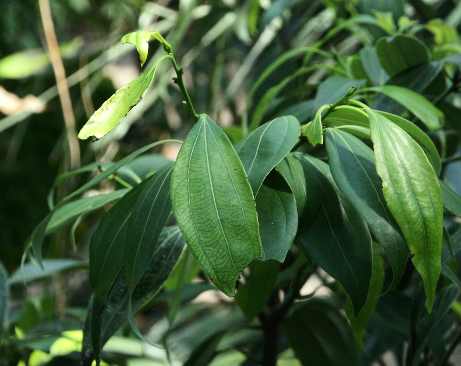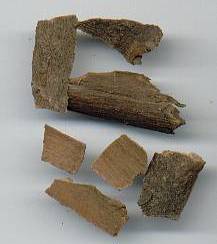
|
| Vietnamese cinnamon, branch with leaves |
Vietnamese cinnamon frequently appears in North Vietnamese (Hanoi [Hà Nội] style) beef soup (pho bo [phở bò]). This specialty is made of bones, vegetables and meat by boiling these ingredients for as much as 12 hours; cinnamon and star anise are added for the last few hours. The broth is served as hot as possible with noodles, boiled meat, thin slices of raw beef, a variety of different vegetables and herbs (for example, coriander or mint leaves or young onion bulbs), raw egg yolk, chile and garlic. If you ever come to Hanoi, don’t miss it! On the topic of South Vietnamese soups, see Vietnamese coriander.
For a comparison of different cinnamon species, see Indonesian cinnamon.



